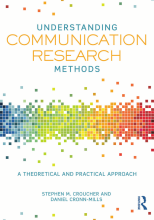Research Design - Data - Definitions and Levels of Measurement
8 important questions on Research Design - Data - Definitions and Levels of Measurement
Why are knowing these two definitions (conceptual and operational) important?
On which 4 levels can variables be measured?
2. Ordinal -> categorical
3. Interval -> continuous data
4. Ratio -> continuous data
Categorical level data is used by social scientists, interpretivists and critical scholars.
Continuous data only used by social scientists.
What are nominal variables/data ?
- Higher grades + faster learning
- Never study anything twice
- 100% sure, 100% understanding
What are interval variables/data?
Social scientific research (including communication research) uses 2 main kinds of interval level scales: 1) Likert scales & 2) semantic differential scales.
What are semantic differential (interval) scales?
Two key things:
1. Scales tap distinct differences between the values. E.g. When an individual circles 4 on a scale of 1-5, this is a measurable difference between 1 to 2, 2 to 3, 3 to 4 and 4 to 5. We can do more advanced statistical analysis based on how participants respond to these kinds of scales.
2. Interval scales do not have an absolute 0 or a complete absence of something.
What are ratio variables (data)?
Which levels of measurement for variables are used by which researchers?
- Social scientists: all the levels of variables
- Interpretive and critical scholars: rarely use interval and/or ratio level variables, as these variables lend themselves to higher-level statistical analyses and thus to things like generalization.
Which levels of measurement for variables are used by which researchers?
- Social scientists: all the levels of variables
- Interpretive and critical scholars: rarely use interval and/or ratio level variables, as these variables lend themselves to higher-level statistical analyses and thus to things like generalization.
The question on the page originate from the summary of the following study material:
- A unique study and practice tool
- Never study anything twice again
- Get the grades you hope for
- 100% sure, 100% understanding































